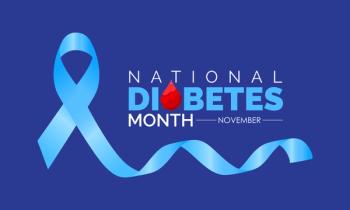
New Model Tailors COVID-19 Testing Recommendations to New Variants
The analysis describes cost-effective options for individuals without symptoms and recommends isolation strategies to help policymakers safeguard against resurgences.
Infectious disease investigators at the University of Texas (UT) Austin have developed a new model that tailors COVID-19 testing recommendations to new variants and likely immunity levels in a community, offering a new strategy as public health leaders seek to end the spread of virus.
This is the first study to identify optimal levels of testing in a partially immunized population.
The analysis, from the UT Covid-19 Modeling Consortium and published in The Lancet Regional Health - Americas describes cost-effective testing for individuals without symptoms and recommends isolation strategies to help policymakers safeguard against COVID-19 resurgences linked to new variants.
"As COVID-19 continues to evolve and cause waves of infections worldwide, rapid testing is an economic strategy for slowing spread and saving lives. Our study helps decision makers determine whether and how often to test,” Lauren Ancel Meyers, PhD, director of the consortium and a professor of integrative biology and statistics and data sciences at UT Austin, said in a statement.
“Frequent testing is recommended when the virus is spreading rapidly in a population with low levels of immunity," she said.
The consortium developed a multiscale model that uses how much the virus is circulating in a local population, how much of the population is immunized against COVID-19, and other factors to determine how often people without symptoms should be tested to help reduce the spread of the virus.
The study recommends a staged strategy that tracks the changing risks as new variants emerge and subside. Investigators recommend that if a rapidly spreading variant emerges in a partially immunized population, everyone should be tested at least once a week, combined with a 10-day isolation period for those who test positive and their households. As the level of immunity increases in a population, testing can be rolled back to once per month and eventually eliminated.
For example, for a variant that is infectious and immune-evasive, like omicron, daily testing is advised until 70% of the population is immunized against the variant, followed by monthly testing until 80% are immunized.
The United States could face future waves of transmission caused by vaccine-evasive variants, investigators said.
This study suggests that proactive testing will remain a cost-effective strategy for reducing risk and avoiding burdensome restrictions as new threats arise.
The recommended testing strategies balance the costs associated with administering tests and missing school or work during isolation with the benefits of preventing death and hospitalization related to COVID-19.
"As COVID-19 continues to evolve, so does our arsenal of effective countermeasures. Our research shows that mass use of rapid tests coupled with voluntary isolation and household quarantine can be both lifesaving and cost saving, if tailored to local risks," Meyers said.
“Now is the time to prepare for yet unknown COVID-19 variants and future pandemics. Proactive testing and isolation can be key to keeping schools and businesses open while preventing overwhelming surges in our hospitals,” Meyers said.
Reference
Adapt the frequency of COVID-19 testing depending on transmission rate and community immunity, study finds. EurekAlert. News release. January 18, 2022. Accessed January 19, 2022. https://www.eurekalert.org/news-releases/940426
Newsletter
Stay informed on drug updates, treatment guidelines, and pharmacy practice trends—subscribe to Pharmacy Times for weekly clinical insights.


















































































































































































































